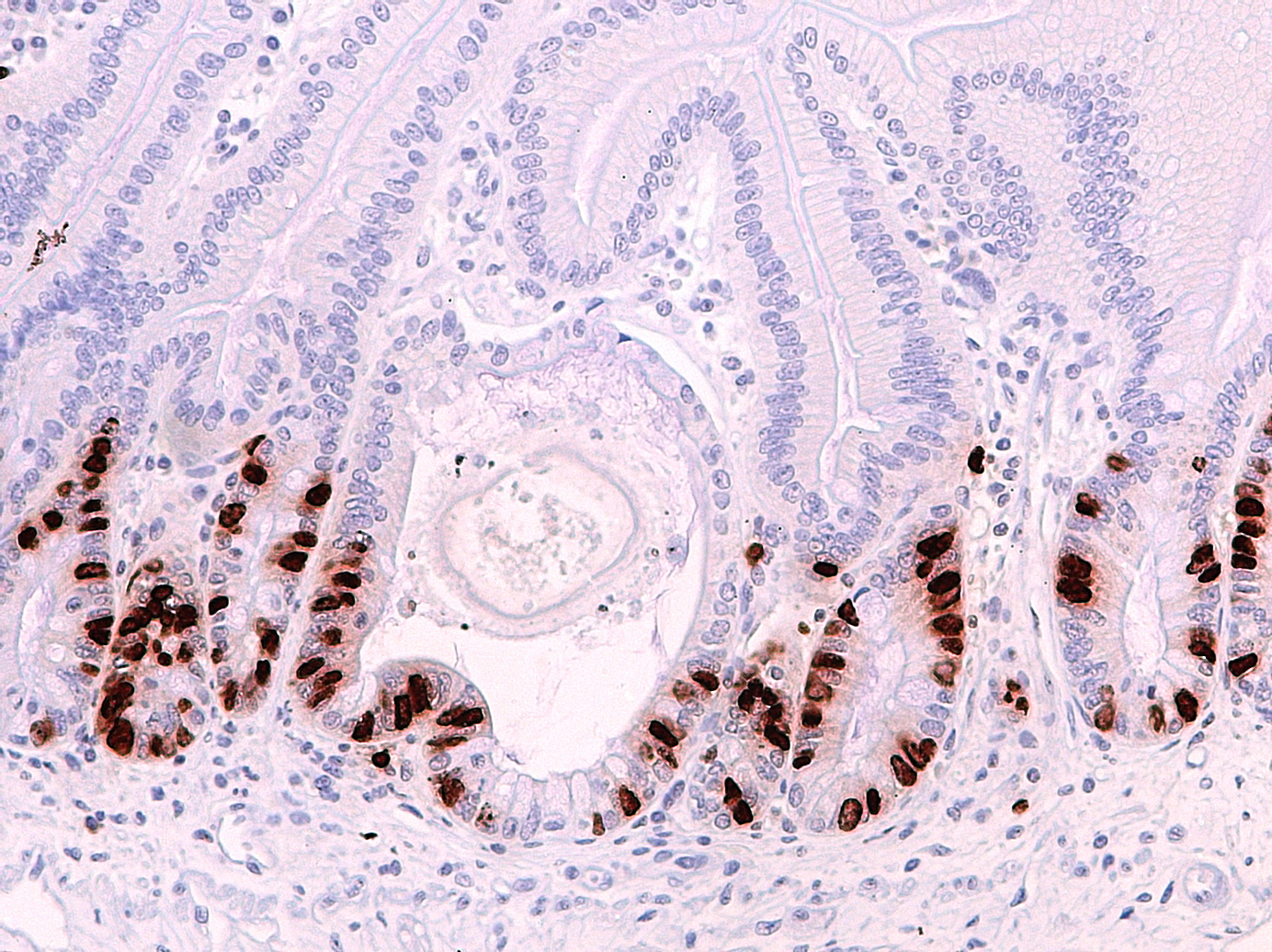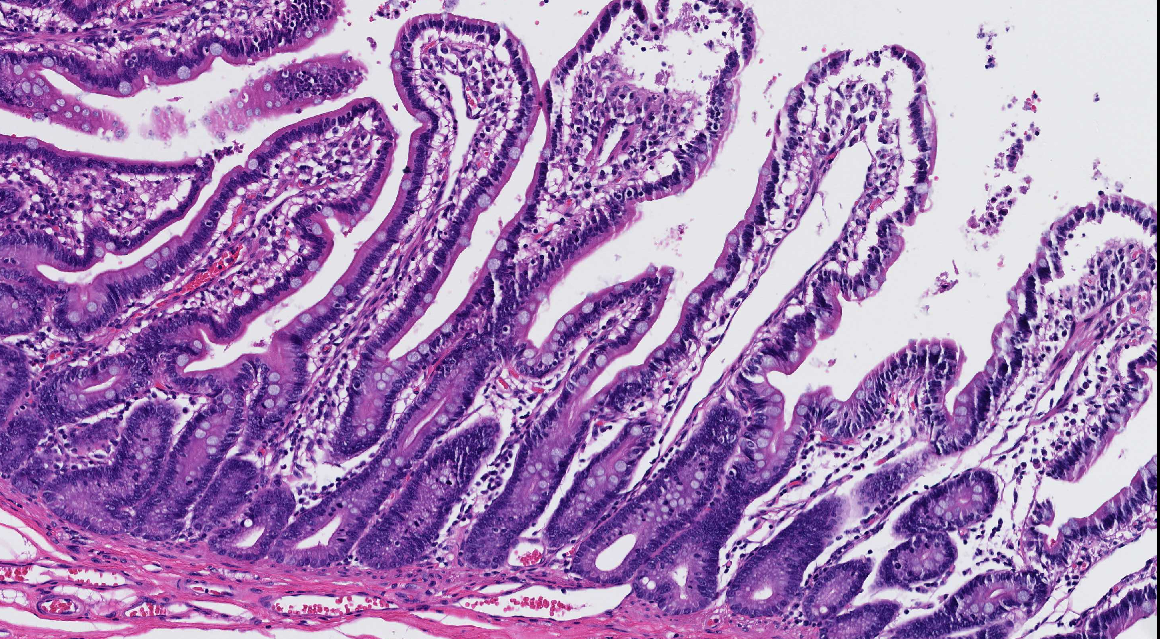Acute Radiation Syndrome
In the acute phase following high dose radiation exposure, the damage primarily manifests in the gastrointestinal (GI) and haematological tissues. This can result in death within the first few days-weeks.
Radiation exposure interrupts cell production in these rapidly proliferating tissues. Tissues that regenerate slowly are generally more resistant to radiation and require higher doses to be affected.
The key to identifying an effective medical countermeasure for GI-ARS is correlating the proposed mechanism of action and histopathology with the effects on survival. Confounding factors such as age, strain, concomitant bone marrow damage and medical management must also be characterised.
Epistem has generated a series of radiation dose response curves for both total and partial-body irradiation, with and without medical management. These data are supported by detailed GI histopathology. This comprehensive database is now used to screen potential prophylactic, mitigatory and therapeutic agents.
Delayed Effects of Acute Radiation Exposure
DEARE refers to long-term health consequences that can occur months or years following exposure to high doses of ionising radiation. Although primarily fibrotic, these effects can include the development of cancer, cardiovascular disease and damage to the nervous system. Epistem has evaluated a series of readouts for the various manifestations of DEARE.
Epistem worked with the Medical Countermeasures against Radiological Threats (MCART) consortium, which was funded by the USA’s National Institute of Allergy and Infectious Disease (NIAID). MCART was established to protect the USA from weapons of mass destruction as part of Project Bioshield. For over a decade, during and after MCART, Epistem has evaluated ARS mitigators for NIAID and other US Government departments.
Epistem’s models use a 320kV X-ray with bone marrow shielding where required. Full dosimetry is performed for each study run. Damage to solid tissues such as the intestine is quantified objectively in H&E or IHC labelled sections. Gene expression profiling is also performed where required.
The knowledge and experience gained from these models is also applied to other therapeutic areas, such as the treatment and prevention of oncology therapy side effects and other causes of GI toxicity.



